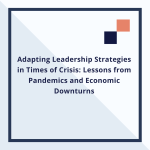In today’s rapidly evolving business landscape, human capital is recognized as a company’s most valuable asset. Effective leadership in human capital management is essential for creating a motivated, engaged, and high-performing workforce. By prioritizing people, fostering talent development, and cultivating a positive workplace culture, leaders can unlock the full potential of their teams and drive long-term organizational success. Here’s how leadership in human capital plays a crucial role in modern businesses:
1. Talent Attraction and Retention
A company’s success depends largely on its ability to attract and retain top talent. Leaders in human capital are responsible for creating strategies that appeal to skilled professionals and ensure they feel valued and supported. This involves offering competitive compensation, growth opportunities, and an inclusive culture where employees feel they belong. A leader’s commitment to nurturing talent leads to lower turnover rates and higher loyalty, allowing the organization to maintain a competitive edge.
2. Empowering Employee Development
Leadership in human capital involves more than managing people—it’s about empowering them to grow and develop. Effective leaders invest in training programs, mentorship, and continuous learning opportunities that help employees enhance their skills and advance in their careers. By fostering personal and professional growth, leaders not only increase employee satisfaction but also build a more skilled and adaptable workforce capable of meeting the challenges of an ever-changing market.
3. Fostering a Positive Workplace Culture
Workplace culture significantly influences employee morale and productivity. Leaders who prioritize human capital understand the importance of creating a positive, inclusive, and collaborative work environment. They encourage open communication, recognize employee achievements, and promote work-life balance. By fostering a culture of trust and respect, leaders inspire their teams to work with greater passion, creativity, and commitment, which directly impacts organizational performance.
4. Driving Innovation through Collaboration
Human capital leadership emphasizes the value of collaboration and teamwork. By encouraging diverse teams to work together, leaders can harness the collective intelligence and creativity of their workforce. This collaborative approach promotes innovation, as different perspectives and ideas are shared, leading to fresh solutions and breakthrough products. Leaders who empower their people to collaborate are often able to drive faster innovation and maintain a competitive advantage in their industries.
5. Adapting to Change
Leaders in human capital must be adaptable and responsive to the evolving needs of their workforce. Whether it’s managing remote teams, navigating economic shifts, or embracing new technologies, effective leaders are proactive in addressing these changes. They focus on building resilient teams that can adapt to changing circumstances while maintaining high levels of performance. By staying attuned to their employees’ needs and external trends, leaders can ensure that their organizations remain agile and prepared for the future.
Conclusion
Leadership in human capital is the foundation of sustainable business success. By focusing on talent management, employee development, and workplace culture, leaders can create an environment where people thrive. In turn, this leads to higher productivity, innovation, and long-term growth for the organization. As companies continue to navigate complex challenges, the ability to effectively lead and develop human capital will remain a key determinant of success.






